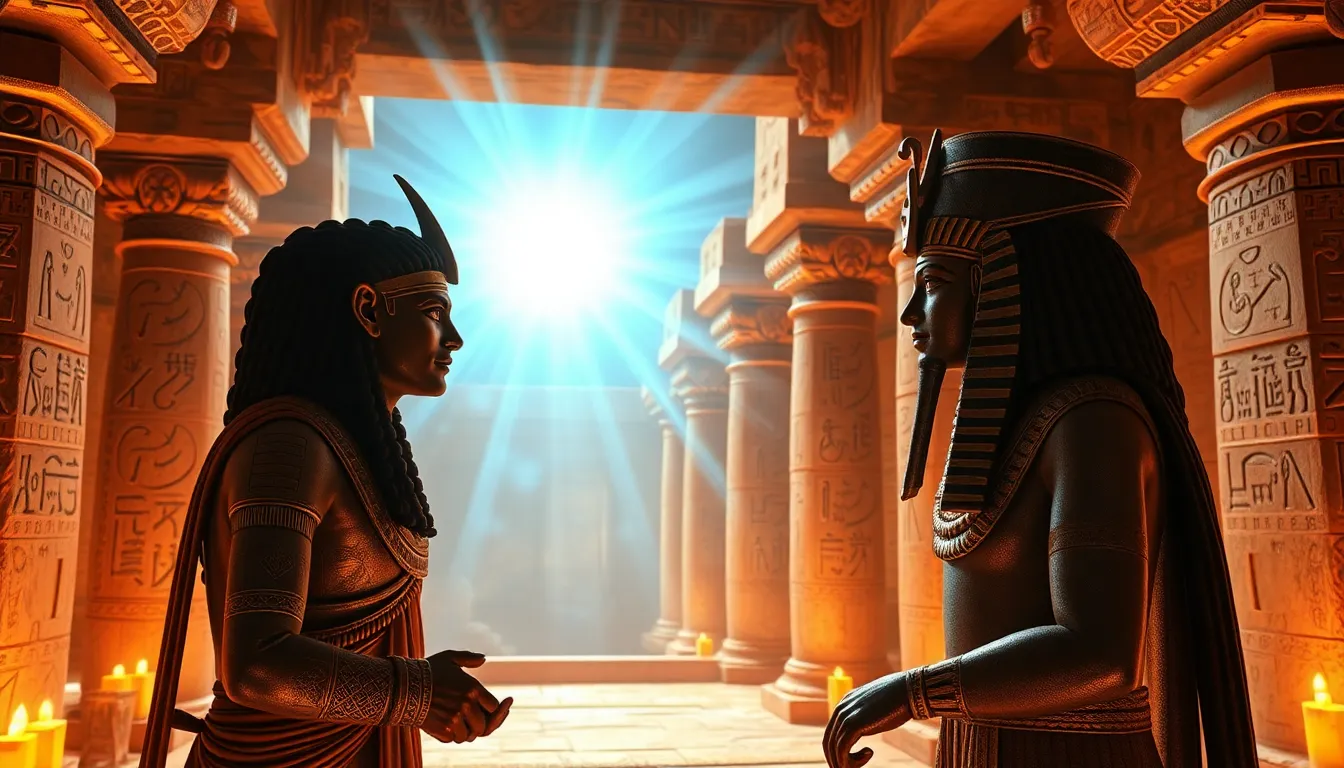The Cosmic Role of Rituals in Ancient Egyptian Society
I. Introduction
Rituals in Ancient Egyptian culture were essential practices that shaped the spiritual and social fabric of society. These ceremonies encompassed a wide range of activities, from daily offerings to elaborate funerary rites, all aimed at maintaining harmony with the cosmos.
The significance of cosmic beliefs in Ancient Egypt cannot be overstated. The Egyptians viewed their world as a reflection of a larger cosmic order, where every action had implications beyond the earthly realm. This article will explore the multifaceted role rituals played in upholding this order, the deities involved, and their broader impact on society.
II. The Concept of Ma’at: Order and Chaos
At the heart of Ancient Egyptian cosmology lies the concept of Ma’at, which represents truth, balance, and cosmic order. Ma’at was not just a philosophical idea but a guiding principle that influenced every aspect of life in Egypt.
The maintenance of Ma’at was crucial for the stability of the universe and society. It was believed that any disruption in this cosmic balance could lead to chaos, paving the way for disorder and calamity. Rituals were designed to restore and uphold Ma’at, ensuring that both the divine and earthly realms remained in harmony.
Through ceremonies and offerings, practitioners sought to reinforce Ma’at, reflecting its importance in daily life and governance. The rituals served as a conduit for aligning human actions with the cosmic order, reinforcing the belief that maintaining Ma’at was essential for a prosperous society.
III. The Pantheon of Gods and Goddesses
The Ancient Egyptian pantheon was rich and diverse, featuring numerous deities, each with their own roles and attributes. Key gods included Ra, the sun god; Osiris, the god of the afterlife; and Isis, the goddess of magic and motherhood.
These deities were not distant figures but integral to the daily lives of the Egyptians. They were believed to influence everything from fertility and harvests to health and protection. Rituals were meticulously crafted to appease these gods, ensuring their favor and support.
- Ra: Symbolized the sun and creation, worshipped through daily offerings and rituals at dawn.
- Osiris: Governed the afterlife, with elaborate funerary rites ensuring safe passage for the deceased.
- Isis: Represented magic and healing, often invoked in domestic rituals for protection and fertility.
IV. Types of Rituals in Ancient Egypt
Rituals in Ancient Egypt were varied and could be categorized into several types, each serving a distinct purpose.
A. Religious rituals: offerings and prayers
These included daily offerings at temples where priests presented food, incense, and prayers to the gods. Such rituals were believed to nourish the gods and maintain their presence among the people.
B. Funerary rituals: ensuring safe passage to the afterlife
Funerary rituals were among the most elaborate, reflecting the Egyptians’ deep beliefs in the afterlife. These included mummification, burial ceremonies, and offerings made to the deceased to ensure their safe journey.
C. Agricultural and seasonal rituals: aligning with cosmic cycles
These rituals were tied to the agricultural calendar, celebrating the flooding of the Nile, planting, and harvesting. Such ceremonies reinforced the connection between the seasons and the divine, highlighting the cyclical nature of life.
V. The Role of Priests and Priestesses
The priestly class played a crucial role in the performance of rituals and the maintenance of Ma’at. The hierarchy among priests and priestesses was well-defined, with each level carrying specific responsibilities.
Priests were tasked with conducting rituals, maintaining temple facilities, and interpreting the will of the gods. They underwent extensive training to ensure they could perform rituals correctly and with the appropriate reverence.
- High Priests: Oversaw temple operations and led major rituals.
- Lower Priests: Assisted in daily offerings and temple upkeep.
- Priestesses: Often served goddesses and played vital roles in rituals related to fertility and health.
VI. The Architecture of Rituals: Temples and Sacred Spaces
The architecture of Ancient Egyptian temples was designed with ritual practice in mind. Temples were not only places of worship but were also seen as the physical embodiment of the cosmos.
Each temple was constructed according to specific principles that reflected the divine order. The layout often included a series of sanctuaries, each more sacred than the last, culminating in the innermost sanctum where the deity resided.
These sacred spaces facilitated cosmic connections, allowing the faithful to engage with the divine through rituals. The grandeur and design of these structures served to inspire awe and reverence, reinforcing the significance of the rituals performed within.
VII. The Impact of Rituals on Society and Culture
Rituals played a vital role in fostering social cohesion and community identity. They brought people together, creating a sense of belonging and shared purpose.
Through the performance of rituals, cultural knowledge and cosmic beliefs were transmitted from generation to generation. These practices not only reinforced the principles of Ma’at but also educated the populace about their place in the cosmos.
The legacy of these ancient rituals can still be seen in contemporary practices, where echoes of Egyptian beliefs continue to resonate in various forms of spirituality and cultural expressions.
VIII. Conclusion
In summary, rituals were a cornerstone of Ancient Egyptian society, deeply intertwined with their cosmological beliefs. They served to maintain the delicate balance of Ma’at, appease the deities, and reinforce the social fabric of the community.
The enduring influence of these practices is a testament to their significance, as they shaped the spiritual and cultural landscape of ancient Egypt and continue to inspire modern interpretations of spirituality and ritual.
Ultimately, the intersection of ritual, society, and the cosmos in Ancient Egypt offers a profound understanding of how humanity seeks to navigate the mysteries of existence.




